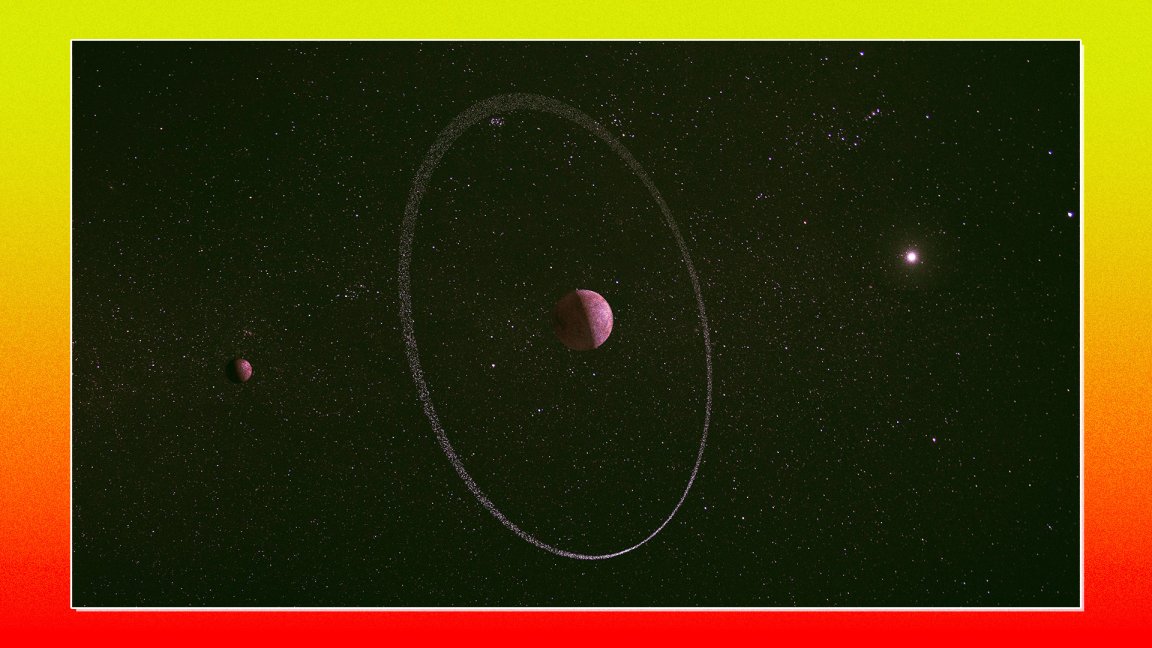
Running Out of Radii
A dwarf planet called Quaoar, lurking at the outermost boundaries of the solar system, has astronomers scratching their heads, as the sheer size of its newly discovered ring practically defies explanation.
While Quaoar is only about half the size of Pluto, its faint ring system blows the current theorized maximum on ring sizes out of the water, according to a new study published in the journal Nature.
Known as the Roche limit, it maintains that the closest an object that is held together solely by its own gravity can approach a planet before being pulled apart by the gravity of the larger body — and eventually forming a ring — is about two and a half planetary radii. Quaoar’s ring is over seven.
“It was previously thought to be impossible to have rings that far out, so in a nutshell, the ring of Quaoar is a real challenge to explain theoretically,” study author Vik Dhillon, a professor of Astrophysics at the University of Sheffield, told Live Science.
Beyond the Pale
Conversely, once you get past the Roche limit, a planet’s gravity should be too weak to prevent orbiting masses from clumping together and eventually forming satellites — or so it was thought.
“Rings that are formed outside Roche limits aren’t meant to be stable; they should rapidly accrete into moonlets, using up all the ring material,” Dhillon explained. “With this discovery, we have a ring not just outside the Roche limit, but way beyond it.”
The discovery was only made thanks to the use of an instrument located in Spain called HiPERCAM, which Dhillon and his colleagues developed, and a fortuitous occultation in which Quaoar passed in front of a bright background star, providing just enough illumination to make out its previously hidden ring that appeared as two dips in the starlight.
Eager For Explanation
While capturing the ring is a feat in itself, explaining its size could prove even more difficult.
According to lead author Bruno Morgado, an astronomer at Federal University of Rio de Janeiro, the simplest explanation is that the ring is young and hasn’t had time to reconstitute, he told Popular Science.
But from the team’s simulations, they estimate that it would only take a few decades for that to happen, meaning that there’s a “low probability” that we would even get to observe the process in the first place.
Perhaps it could be some yet unseen object whose gravity is hindering the formation of moonlets. But in all likelihood, the researchers wrote in the study, it may just be time to revisit the Roche limit.
More on rings: James Webb Spots Asteroid With Its Own Saturn-Like Rings